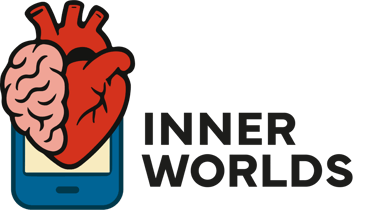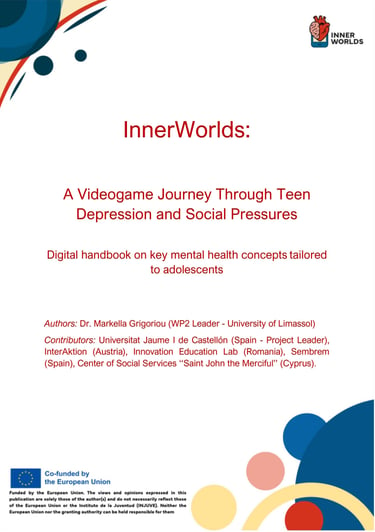Our new Digital Handbook Launched on SALTO YOUTH!
We are pleased to announce that the Digital Handbook on Key Mental Health Concepts, developed in the InnerWorlds project, has now been officially published on SALTO’s Toolbox and is available for youth workers, educators, parents, caregivers—and young people themselves.
Janevski
9/17/20252 min read
This Hand book is a youth-centred resource on which the Video game for promoting mental health we are working on is based.
Improve adolescent mental health literacy
Help adults who work with youth—youth workers, educators, parents—recognize early signs of distress
Promote resilience, healthy habits, coping strategies
Use engaging storytelling and interactive scenarios (via the videogame) to bridge theory and lived experience
The handbook is freely downloadable in PDF form. salto-youth.net
The Co-Creation Process & Stakeholder Feedback
From the beginning, InnerWorlds was never meant to be a top-down handbook. We co-created it with those who know best: those working every day with young people, and young people themselves. Specifically:
In each partner country (Austria, Cyprus, Spain, Romania) we consulted at least two stakeholders—people who are active youth workers, educators, mental health professionals, or similar. Their input helped shape the content, clarify difficult concepts, and ensure relevance.
These stakeholders contributed ideas, corrections, and practical suggestions to ensure the material reflects what actually happens in real life (for example, common situations young people face, what works in practice, what support is realistic, etc.).
Feedback was drawn from lived experience—people engaged in daily work with adolescents provided insights, shared challenges, stories, and suggestions that helped us adapt the language, examples, and tools.
This co-creation and iterative consultation helped ensure the handbook is accessible, usable, and grounded in reality.
Why It Matters
Adolescence is a time of rapid change — neurologically, socially, emotionally — and yet many young people (and the adults around them) struggle to understand what’s happening, when help might be needed, or how best to offer support. The handbook helps fill several gaps:
Mental health literacy — giving young people and those supporting them clearer knowledge of what mental health involves, what signs to watch for.
Early recognition & prevention — being able to notice early distress can make a big difference; interventions tend to work better when they come earlier.
Coping & resilience — it’s one thing to understand problems, another to have strategies to deal with them. The handbook + game help with tools, reflection, and practice.
Reducing stigma — openness in conversations about emotions, distress, mental health challenges can reduce shame and fear around seeking help.
How to Use It
Youth workers, educators, school counsellors, and mental health professionals can use the handbook as a basis for workshops, group discussions, or one-to-one support.
Parents/caregivers can use it to better understand what adolescents may be going through, and how to provide supportive environments or know when to seek help.
Young people can use parts of it directly, especially alongside or through the videogame element, to reflect on scenarios, practise coping strategies in safe, interactive ways.
What’s Next
The videogame component is still in development and scheduled for completion in March 2026.
In the meantime, the handbook stands as a key deliverable—something available now to be used, tested, adapted. As such, we will translate it to German, Spanish, Greek and Romanian later as well.
We hope to continue gathering feedback from those using the handbook, to refine later versions or complementary materials.
A Resource for Youth Workers & Young People
Connect
Follow us leave your legacy in promoting youth mental health awareness.
Partners
Outcomes
innerworldseu@gmail.com
© 2025. All rights reserved.


Funded by the European Union. The views and opinions expressed on this website are solely those of the author(s) and do not necessarily reflect those of the European Union or the Instituto de la Juventud (INJUVE). Neither the European Union nor the granting authority can be held responsible for them


